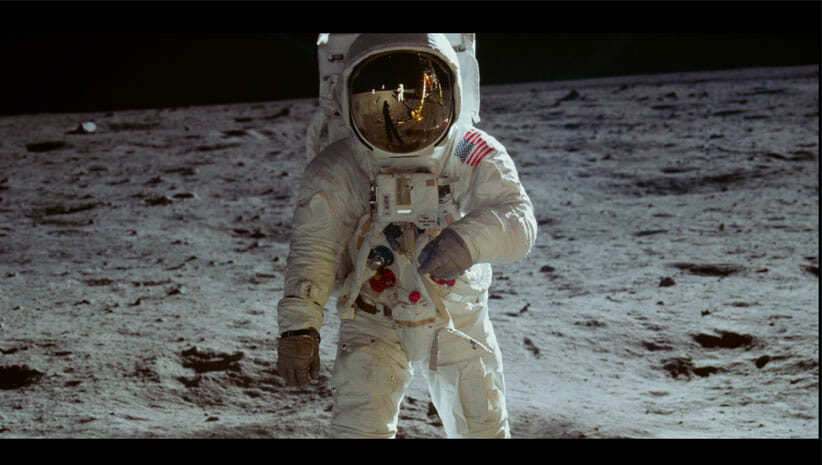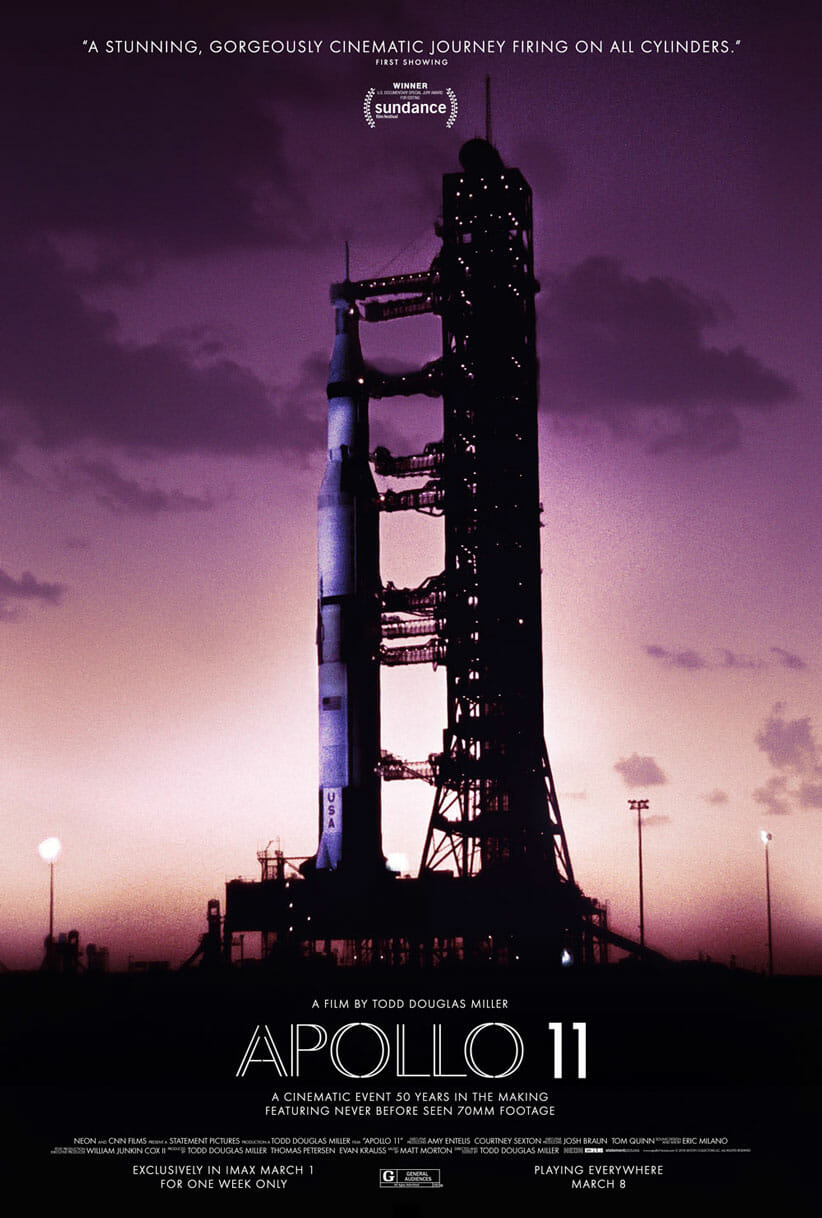Apollo 11 Delivers Viewers to the Moon
We have The Right Stuff, Apollo 13, Apollo 18, First Man, From the Earth to the Moon. Do we need another film about manned spacecraft missions? A resounding yes, it turns out. If the film is Apollo 11.
Apollo 11 is an astounding documentary. It is brilliant in its breathtaking simplicity, masterful editing, and tremendous sound design. The movie is compiled from lost high-resolution color film and uncatalogued audio recordings. These are synched together to create a chronological documentation of the 1969 mission to the Moon. The result encapsulates an experiential film. You feel as if you yourself are in Mission Control and then travel to the dark side of the Moon with Astronaut Michael Collins.
Apollo 11 incorporates a trove of newly found footage that had been sitting in the National Archives for nearly 50 years. It seems incredible that NASA filmed every step of the mission from so many angles with such high-definition cameras. Neil Armstrong and Buzz Aldrin are credited as cinematographers, as you see their astronauts’ eye view captured from inside the spaceship.
Astonishing Never-Before-Seen Footage
Without any voiceover, the film provides a poetic visceral experience. Aside from matching up control room audio and astronaut voice recordings, the only narrative explanations in the doc are a few mind-blowing onscreen statistics (velocity, distance from earth, distance from moon). Very simple clear illustrations of the trajectory and various maneuvers complete the contextual supplements.
The ambitiousness of the space program, the astonishing size of the operation, and the risk of sending men to the Moon all come alive in the documentary. Director Todd Douglas says, “The mission of Apollo 11 is one of the greatest achievements in human history. Hundreds of thousands of people spread across tens of thousands of companies all focused on putting the first humans on another world.”
Small Steps and Giant Leaps
Everyone is familiar with Neil Armstrong’s proclamation, “That’s one small step for man, one giant leap for mankind.” His words, as long with all of the astronauts’ genial personalities shine through in the film. Closeups of the three astronauts before, during, and after the mission humanize these three icons. The tension of possible mission failure is only evident from the expressions on the faces of the men in the control centers.
The footage on the ground is an expressive time capsule of society in the summer of 1969. You see the homogeneity of the Cape Canaveral crowds (estimated at one million) and the predominately white male NASA employees. The massive scale of the basic and large computational machines and simple black-and-white TV screens at each station are a reminder of the audacity of this singular feat in our history.

Go See Apollo 11
Apollo 11 is directed by Todd Douglas. The film premiered at Sundance Film Festival in January and is now in theatrical wide release. Learn more and find showtimes at: apollo11movie.com
Karen Henry is an Associate Editor at LA YOGA who volunteers in a variety of capacities for nonprofit organizations and artists around Los Angeles. She practices yoga as a counterbalance to her daily impact sports and is a mother of four grown children who also practice yoga . Now, she’s working on teaching yoga and joy of life to the grandkids!


